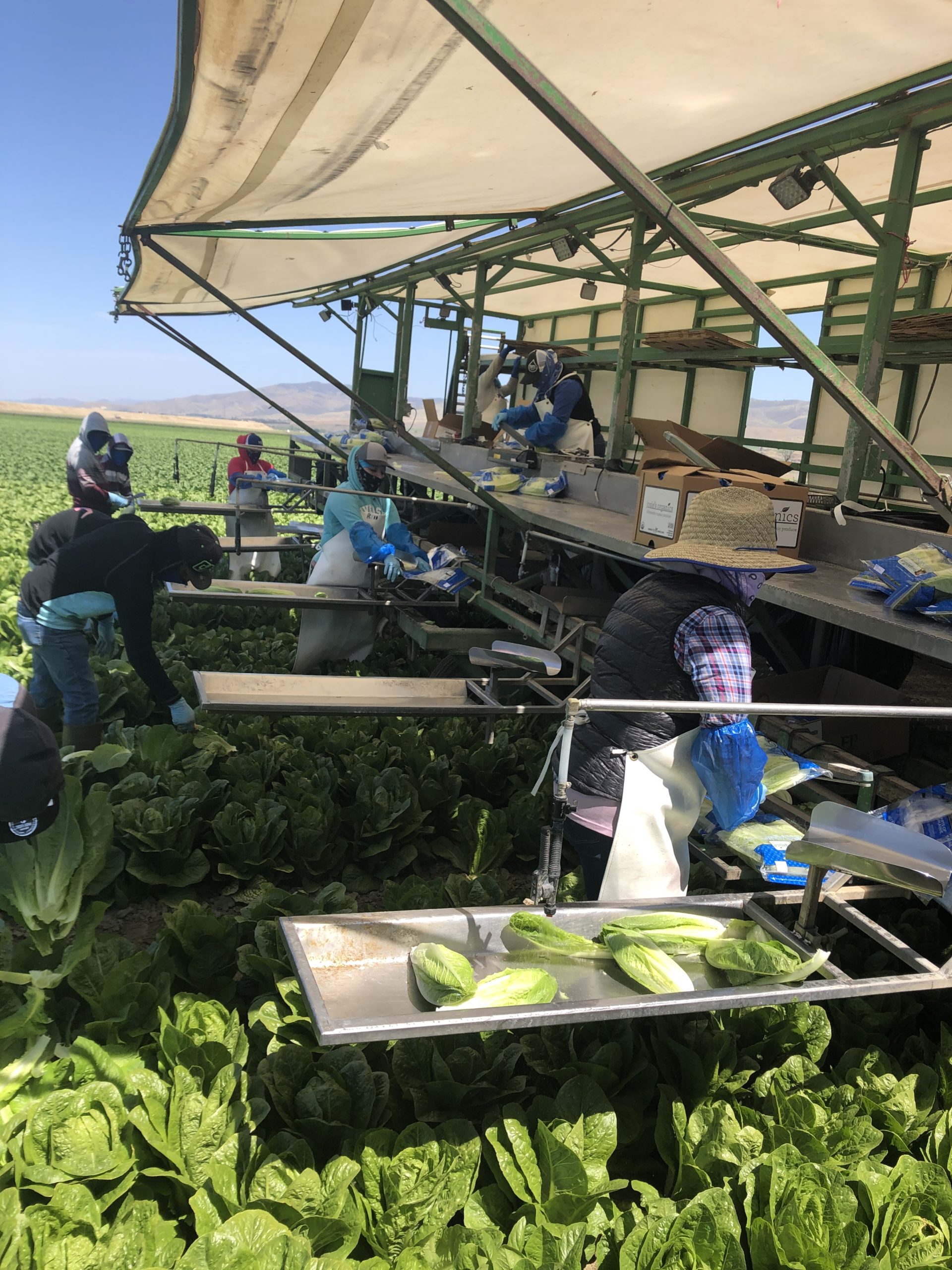
Aug 12, 2021
How Braga Fresh stays ahead of industry changes
At Braga Fresh Family Farms Inc., sustainability is in the ground and in the name of one of its sister companies.
Hard work and dedication to the land, mixed with innovative agronomic and sustainable growing practices, have helped the third-generation, family-run company thrive for nearly a century.
“Stewardship and sustainability are our No. 1 priorities,” said Eric Morgan, vice president of environmental sciences and resources for the Soledad, California-based Braga. “Our top priority is improving the land we have and leaving it in better condition for the next generation. That’s not a tagline. It’s what we are actually trying to do.”
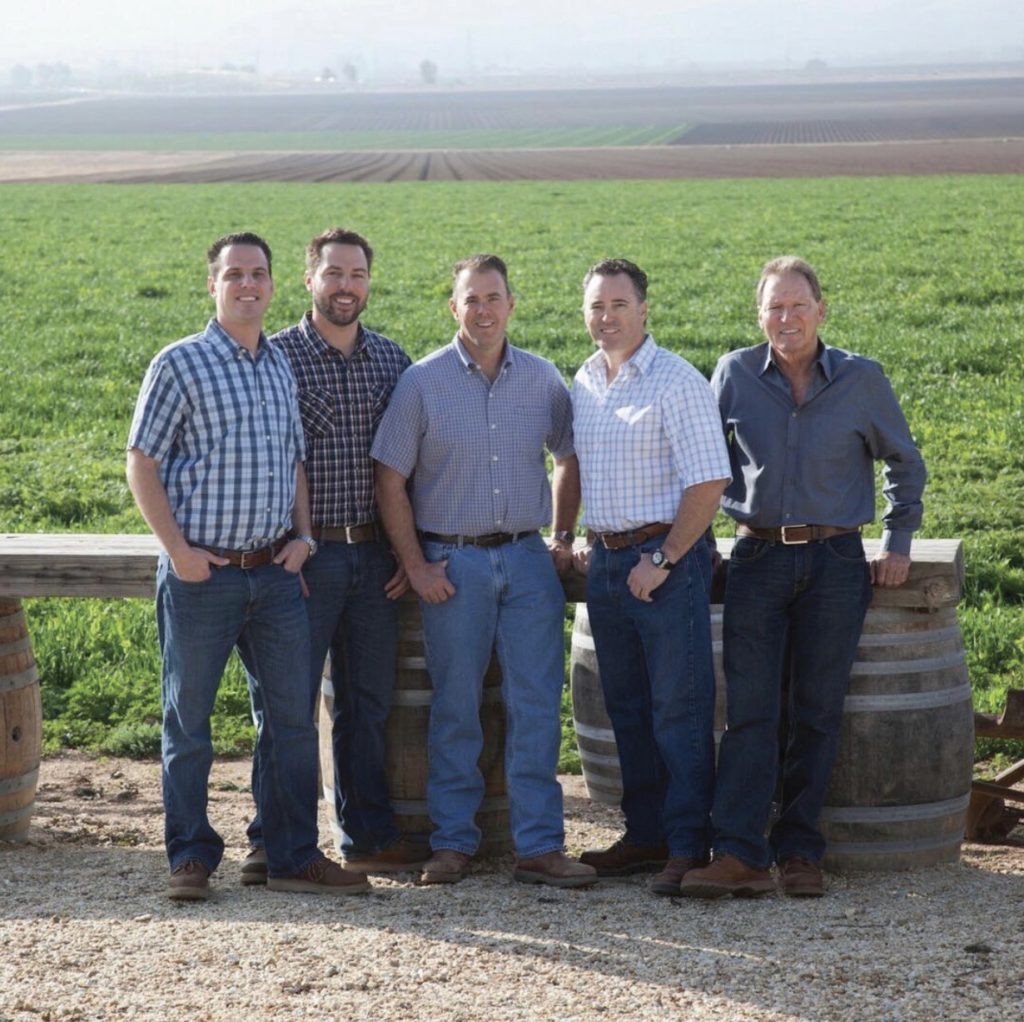
(Brothers) Chris and Rod Braga and second generation Stanley Braga. Photos: Braga Fresh
Braga plants cover crops, tracks carbon use, examines irrigation water and applies the right amount of fertilizers.
Roughly 70% of Braga’s crops are grown organically. As it continues to transition farmland, Braga is working to increase that number every year. It is setting aside as many acres as it can. Braga grows on 20,000 total acres. It transitioned its entire 600-acre home ranch to organic production.
Braga grows a large variety of organic vegetables in multiple California growing regions. Braga offers leafy greens such as arugula, chard, cilantro, fennel, kale, leeks, parsley, spinach, green and red leaf lettuce, romaine lettuce, spring mix and collards as well as broccoli, cauliflower, cabbage, celery, green onions and beets.
“The practices our founders instilled in us worked well,” explained Morgan. “If we weren’t doing it right, we wouldn’t have good crops. We are able to get great crops off the beautiful land and darn good crops from the harder to manage soils.”
Continuous availability
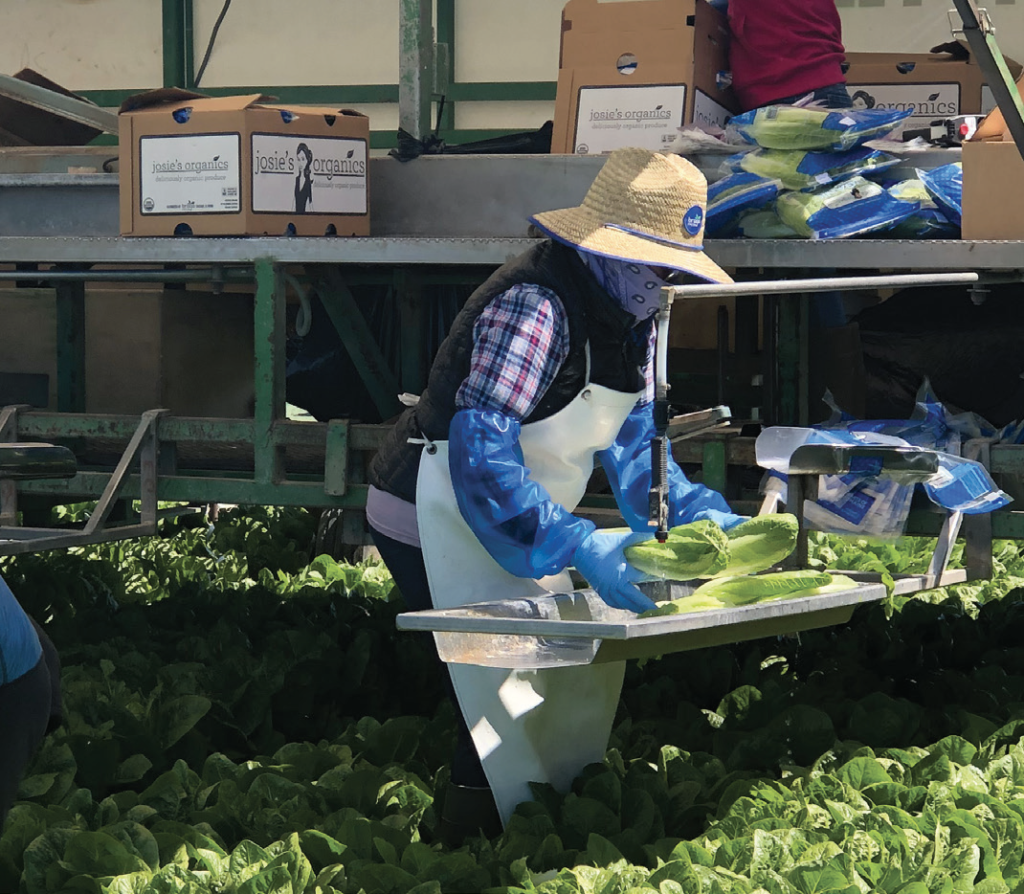
Production in the Salinas Valley, in Imperial, Monterey, San Benito and Santa Cruz counties and Yuma, Arizona, provide for year-round shipments. Harvesting in the northern regions runs April through mid-November. Planting in the southern desert regions begins in late August and early September. While some crops begin harvesting in October, the bulk commences in November and finishes in early March.
Braga’s sister companies, Sebastian Harvesting, Valley Farm Application, Al Pak Labor, A.S.A. Organics and A.S.A. Farms began in the 1990s. A.S.A. stands for All Sustainable Agriculture. A.S.A. Organics is the organic farming entity in the northern production regions while A.S.A. Farms works the south.
“We are as vertically integrated as possible,” said Morgan. “We are doing as much as we can with spraying, fertilizing, and now with processing. We are trying to take on as many responsibilities as possible, keeping everything under our own controls. It’s huge to be able to decide what you want, pursue it and put people in place to make it happen.”
In 1928, Sebastian Braga, a Swiss immigrant, arrived in south Monterey County and started growing row crops. In the late 1930s, Sebastian and his wife Josie Braga bought and settled on a 600-acre ranch at Soledad. They raised dairy cattle and grew tomatoes, onions, sugar beets and hay and field corn. During the 1960s, Sebastian’s sons, Ernest, Norman and Stanley, joined the operation. They changed the dairy cattle operation to a beef cattle operation and started growing lettuce, celery and cauliflower.
In the 1990s, the third generation of Bragas – Rodney, Chris, Carson and Marshall – joined the business. Braga began experiencing significant growth. After graduating from college, Rodney applied his managerial expertise which helped fuel expansion of growing regions beyond the main home ranch area. Braga began transitioning to organics during this period.
The ground Braga’s founders acquired in the 1920s includes a variety of soils, from beautifully productive dark and heavy alluvial soils to those with decomposed granite that can be used as a roadway base. The soils are all within a quarter of a mile of each other and require different management strategies.
Emphasis on the soil
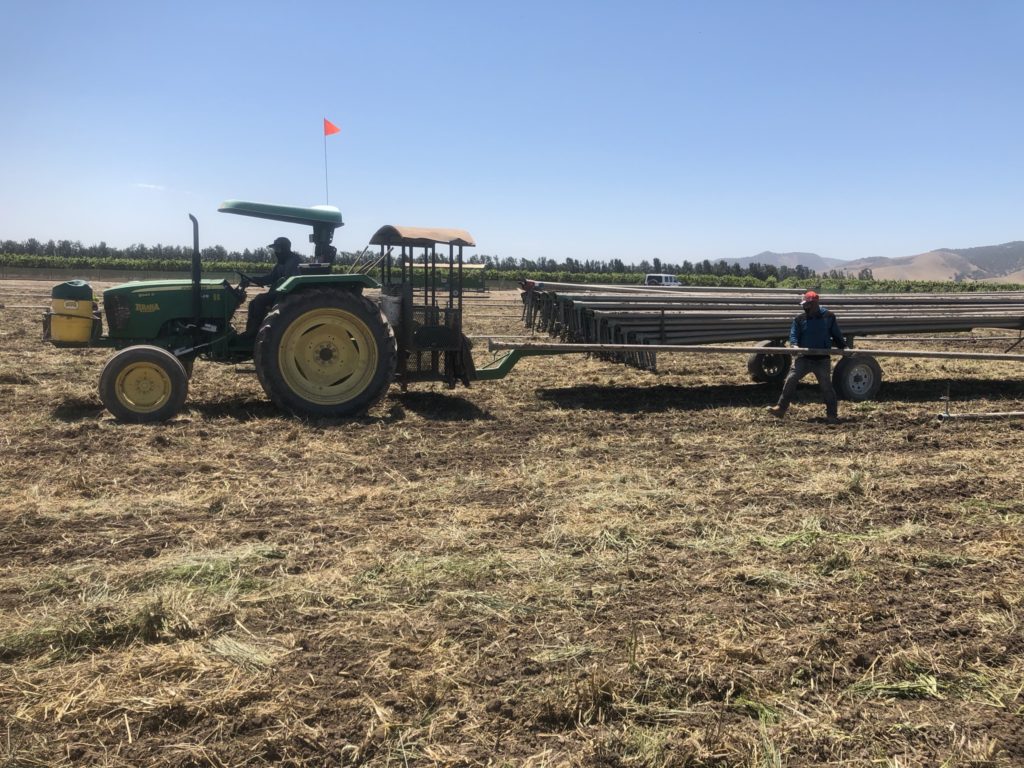 Braga employs a robust soil testing program. Before every planting and fertilizer application, soil is tested to ensure the proper amount of nitrogen and nutrients is applied. Morgan believes soil testing will become a standard industry practice. Employing the procedure for almost a decade, the testing has provided Braga advantages.
Braga employs a robust soil testing program. Before every planting and fertilizer application, soil is tested to ensure the proper amount of nitrogen and nutrients is applied. Morgan believes soil testing will become a standard industry practice. Employing the procedure for almost a decade, the testing has provided Braga advantages.
“With soil testing for nitrogen and ammonium, we find that we can reduce our inputs and learn more about our crops and do a better job growing them sustainably,” said Morgan.
Though unusual to plant summer cover crops in the Salinas Valley, the cover crops take up any residual nitrogen left in the soil from the previous crop. The cover crops hold that nitrogen in the tissue of new plants until the cover crop is terminated and that nitrogen is made available to the next crop. The cover crop also takes CO2 (carbon dioxide) from the atmosphere and holds it as carbon in the plant that is later added to the soil.
“The crop following the cover crop is a better quality crop,” said Morgan. “If you plant a cover crop, it will save the environment and you will be saving some money.”
An example of the nitrogen use efficiency Braga daily employs is the fact that a broccoli crop, for example, requires at least 250 pounds of nitrogen. The most that will be taken away at harvest would be 80 pounds. The 170 pounds of nitrogen left in the crop’s residual biomass is accounted for when the Bragas make planting decisions for the next crop.
Via carbon tracking, Braga is able to track the atmospheric CO2 its crops and cover crops add to the soil. The company said a Ph.D. soil scientist calculated that it has injected 34.3 million pounds of CO2 via organic fertilizers into the soil since 2018.
Reliance on beneficials
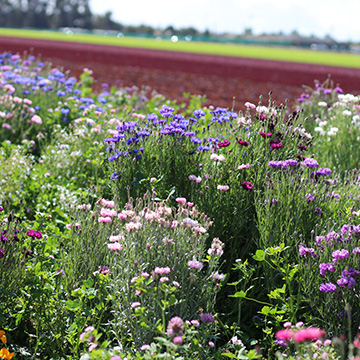 Braga relies on Mother Nature to do much of the heavy lifting via beneficial insects battling pests. However, in cold weather at the season’s start or finish, beneficial insects don’t respond as well. Organic fertilizers take considerably more time to break down the soil and become available to the crop. Sometimes that fertilizer isn’t even available that year.
Braga relies on Mother Nature to do much of the heavy lifting via beneficial insects battling pests. However, in cold weather at the season’s start or finish, beneficial insects don’t respond as well. Organic fertilizers take considerably more time to break down the soil and become available to the crop. Sometimes that fertilizer isn’t even available that year.
“Organics requires attention to detail,” said Morgan. “When it comes to pesticides, the fertility and all the different production inputs you have available to you, they are slow and they don’t work as well.”
New farming techniques are critical for Braga’s success. On some of its organic lettuce crops, Braga employs drip irrigation via underground drip tape. Reducing atmospheric water loss and providing higher distribution uniformity, the system produces better crops. The previous season’s single-use drip tape is recycled and used the following season.
Transitioning to drip irrigation requires changing fertility and spraying practices. As buried drip tape does not push fertilizer into the soil like sprinklers, a new method was needed to place nutritional elements into the ground.
“It’s trial and error,” said Morgan. “You have to cultivate differently. There are a lot of little things you need to figure out.”
To prevent the fertilizer from discharging into the aquifer and contaminating groundwater and surface water, the proper amount of fertilizer is applied at the right time. “It takes so little nitrogen to increase nitrate in groundwater and make it non-drinkable,” said Morgan.
Technological advancements
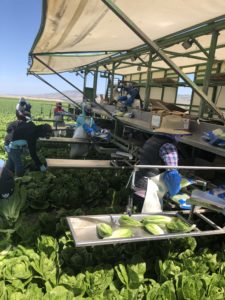
Technology is vital to Braga’s farming. Beneficial insects are dropped into fields via drones. University of California crop management program irrigation scheduling software audits Braga’s water application.
GPS helps maximize field and implement efficiencies. “If we can get to under an inch accuracy with our groundwork, we will be saving passes, diesel, labor and wear and tear on machinery,” said Morgan. “It adds up almost 20% when you let the GPS guide you. There is a gigantic list of things we’re doing in technology.”
Tablets collect agronomic, production and harvesting data, which is entered into apps.
“The challenges we see when moving to new technology include ensuring you get all the data you want and that it is accurate and complete,” said Morgan. “It’s a big deal going from a log book to a handheld personal device like an iPhone or iPad.”
Braga has used a robotic weeder. The Bragas are reviewing a driverless tractor. They also plan a demonstration of a weeding machine that fires lasers at weeds.
Braga takes a proactive attitude towards California’s arduous regulations. Braga will be able to adapt to water board regulations in the near term because Braga has been preparing for them. Regulatory hurdles that go into effect after 2030 will be difficult to achieve as the technology is not in place to comply with them.
“The regulatory framework in California growers is robust, but we are up to it,” he said.
Sustainability is part of Braga’s daily routine. “We ensure sustainability by building up soil organic matter, planting cover crops, by using the right amount of fertilizer, and by protecting surface water from runoff that can contain sediments or nutrients,” Morgan said. “It’s a big deal for us.”









